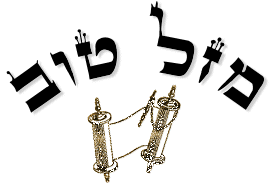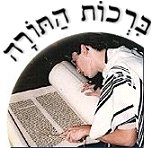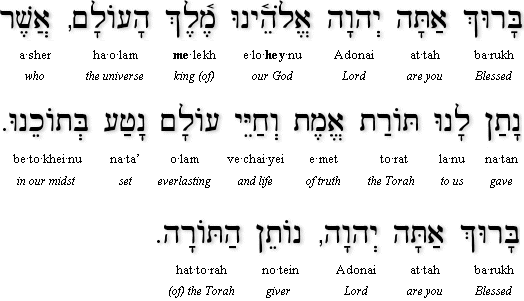|
===========================
Terms:
Aliyah - (f.; pl. "Aliyot"); going up, rising; ascent; in location or in personal qualities; as in "Aliyah l'Eretz Yisrael," "Going up to live in the Land of Israel" or "Aliyah La'Torah," "Going up to make a blessing on the Torah." For a given (Shabbat) Torah reading service there are seven aliyot recited (that is, seven different portions of the weekly parashah that are recited during the Torah Reading service).
Bimah: (n) A platform from which Torah is read (usually in front of the Ark, but in Sephardic synagogues it may be in the center of the room).
Mazal Tov! (inter.) "Congratulations!" An expression of congratulation or heartfelt well-wishes ("Mazel Tov on the new baby!").
Tallit Gadol: (n) A four-cornered prayer shawl worn by adults during the morning prayers. Each corner of the Tallit Gadol has fringes, called tzitzit. Wearing the tallit helps get us in the mood for prayer. The third paragraph of the Shema prayer contains the commandment to wear tzitzit. At the top of a tallit is an atarah, or a band. The purpose of the atarah is to make sure we do not put the tallit on upside down (as well as to list the Hebrew blessing recited upon donning the tallit gadol). The atarah is removed when the tallit is used to bury the dead. Traditional Jews also wear a tallit katan (small tallit). It is also called the arbah kanfot (four corners), which is a special garment like an undershirt. It also has four fringed corners. For Traditional Jews, the tallit gadol and tallit katan are worn only by men.
Return to top
|








